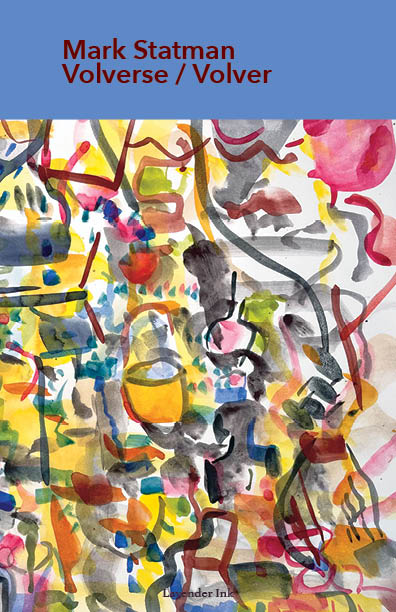
Part 2 MARK STATMAN: MEXICO AND THE POETRY OF GRIEF AND CELEBRATION
Part 2 of my interview with Mark Statman looks closely at Mark’s Latin American poetic influences, his life in Mexico and ends with an extract
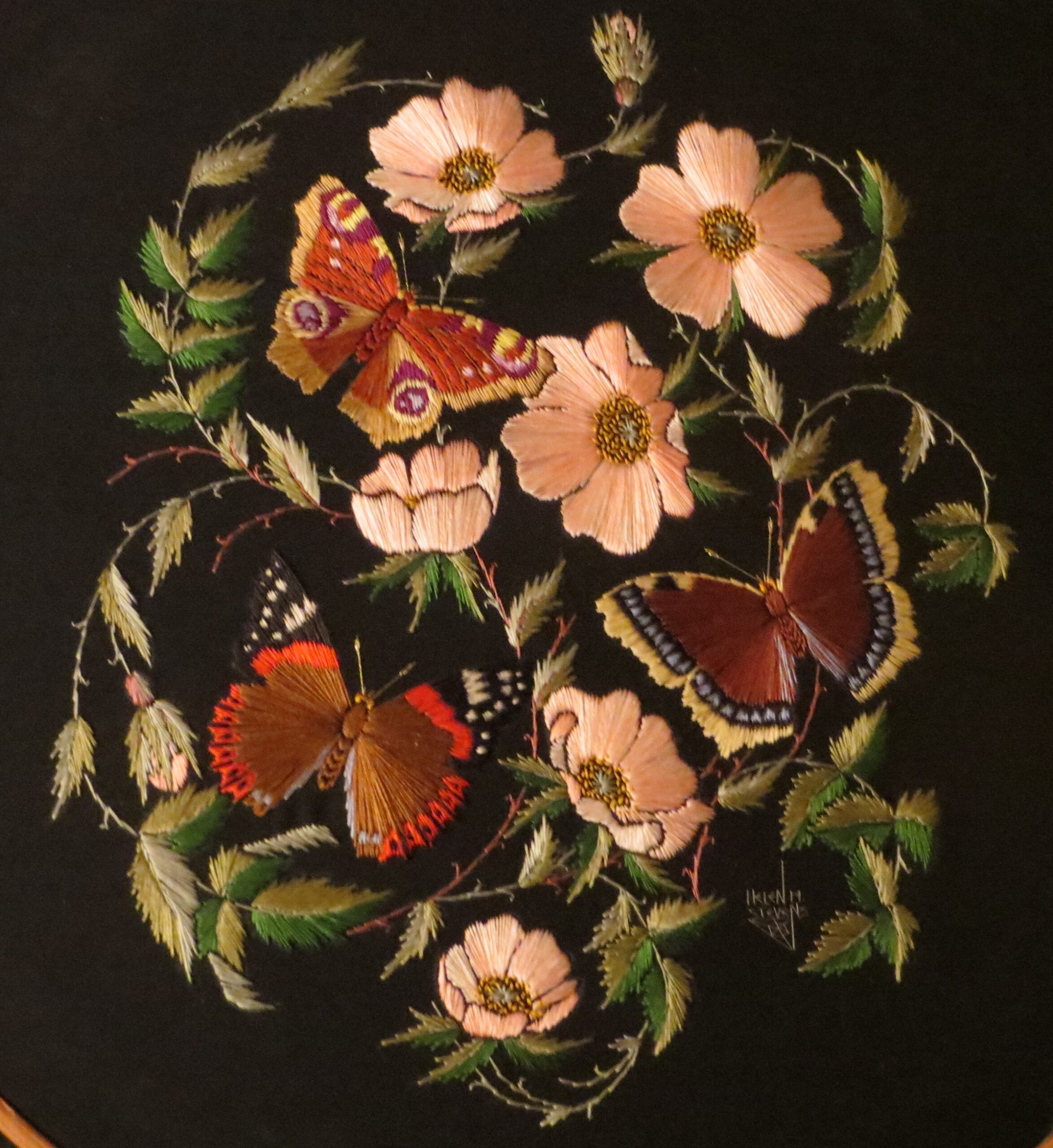
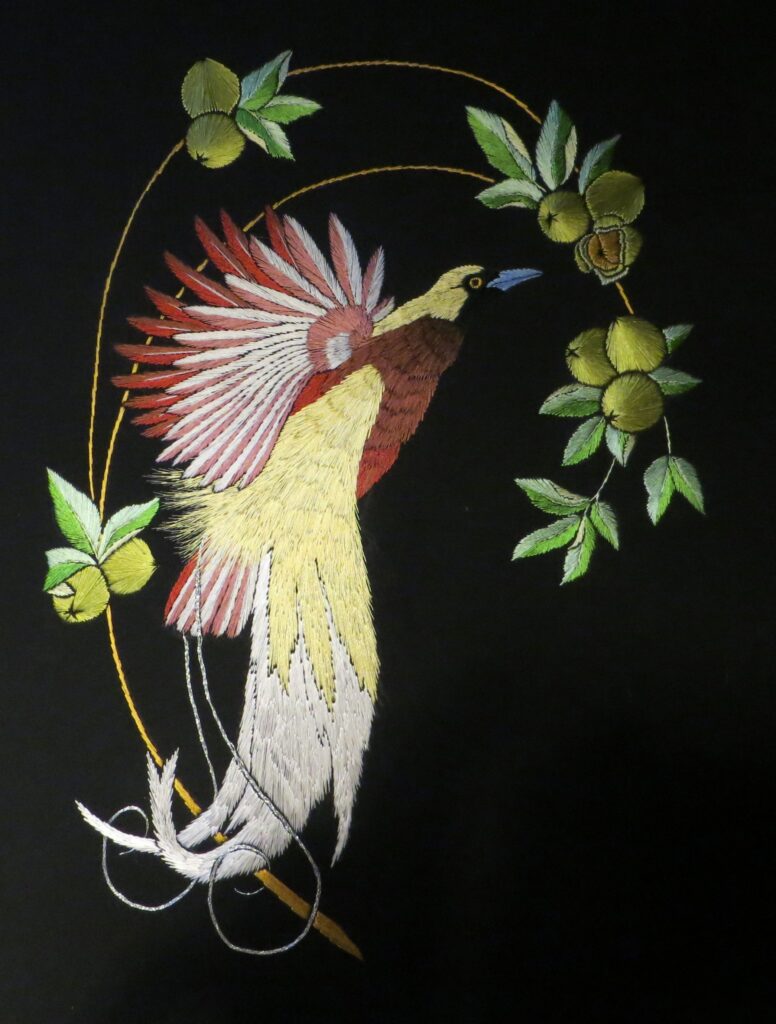
I inteviewed Helen M Stevens about how she has revived the art of embroidery, creating original contemporary patterns while studying and drawing on, “One of England’s greatest historic artforms.” Helen has written numerous books on embroidery as well as historical novels, and exchanged her skills with thousands of other embroidery enthusiasts across the world.
Leslie: What’s the story of your first encounter with embroidery, and how did that grow and develop? Who helped and encouraged you?
Helen: Even before I knew what embroidery was, I was fascinated by “thread”. My Dad was a Squadron Leader in the RAF, and one of our postings was to the USA, where Dad was working out of the Pentagon. I was about three when we returned to the UK, and I can remember sitting watching everyone pack up the house (already used to the upheaval and inevitable boredom of relocation during military life!), and saying “I haven’t got anything to do!!” My Dad found a big bundle of wool and string and taught me how to make it into a “ball”. That kept me occupied for hours and I believe it is where my enthusiasm for textiles began.
Secondly, still as quite a small child back in the UK, I went to a village primary school in Suffolk, where we had a wonderful, if somewhat eccentric, needlework teacher. Once a week she would come into the school with a huge carpet bag full of colourful threads, felt and scraps and allow our imaginations full rein!
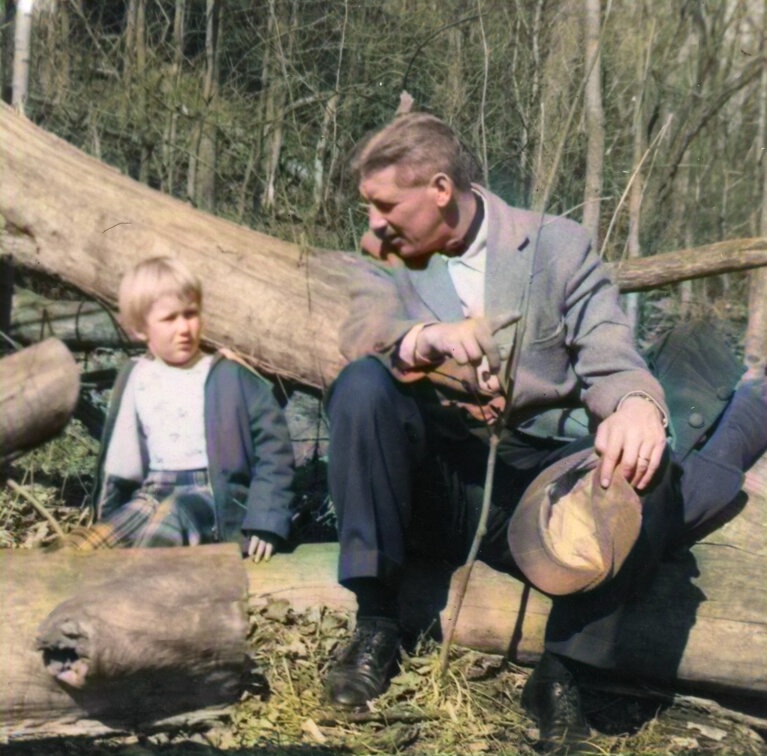
A little later I began to work complex kits, and then to design my own work. I have no formal training, but learnt from the study of historic embroideries. My family were a huge support.
Leslie: In a nutshell, how do people embroider? What’s the difference between traditional and modern embroidery?
Helen: The Oxford English Dictionary defines embroidery as “patterns sewn onto cloth using threads of various colours, resulting in decorated fabric”. Basically, using a threaded needle, if you can stab through the fabric, draw the thread through and then bring it out again, you are embroidering! Back in the 1980’s when I began my career, embroidery (or what passed for embroidery) was in something of a doldrum. Whilst there certainly was beautiful professional embroidery being made, this was largely in the areas of Church embroidery and heraldic work. “Modern” embroidery at that time sometimes did not contain any STITCHES at all, with the exception of applied work, collage, etc. Plastic mesh could count as fabric! Not for me! I wanted to get back to the concept of embroidery as a truly fine art, to be enjoyed as such.

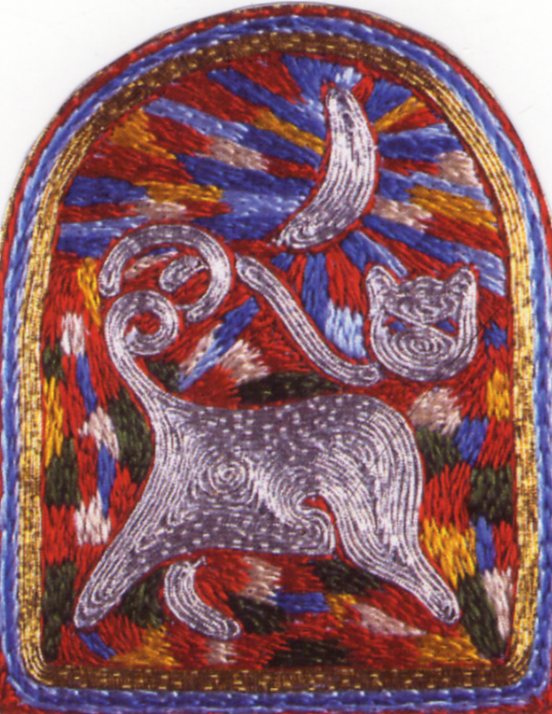
Leslie: Why did you start up The True Embroideries Studio? Can you describe how you’ve used some of the little understood techniques involved while making them accessible to modern audiences?
Helen: Of course! It leads on from my reply to your previous question … The True Embroideries Studio came into being in 1981, when I began embroidering full-time. I felt that there was a place for the tradition of “true embroidery”, hence the same of my studio, in the modern world. And, needless to say, I needed to make a living! But I always felt that art and good business should not be mutually incompatible, it should be possible to combine the two without bastardising the integrity of one of England’s greatest historic artforms. In the Anglo-Saxon era, embroidery was one of the foremost of the arts, exported throughout the then-known world and going by the name of “opus Anglicanum” – literally “English work” as the very definition of excellence.
Perhaps surprisingly, the techniques which I made a point of integrating into my own work, are very much still those defined by the Oxford English Dictionary… the stitches themselves are simple, there is no convoluted twisting, turning and threading the silks into each other or themselves, if you can “stab and pull” a single stitch, you can create beautiful work. It is a question of how those stitches are put together. The Anglo-Saxons began with the simplest of all: straight and split stitches. All of my techniques originate right there! I began by getting known, then teaching Masterclasses, then my books followed and now … we are in the Internet age! My e-book “ONE SIMPLE STITCH” explains all. https://vivebooks.com/products/one-simple-stitch
Leslie: Can you describe the process of developing your two samplers for masterclasses and what you chose to go into them?
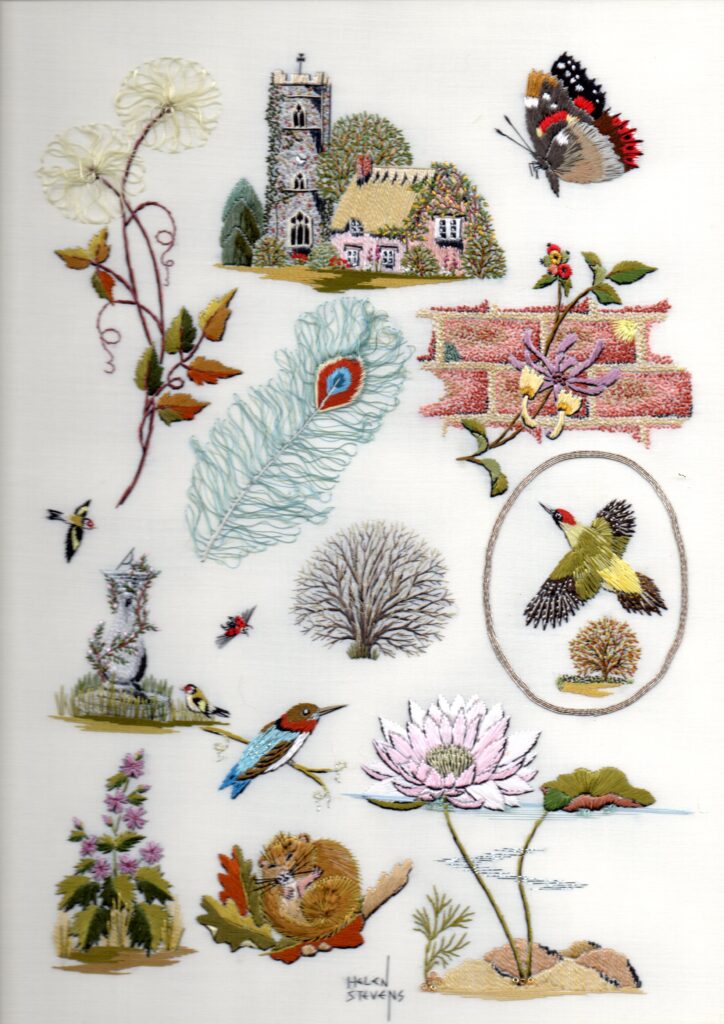
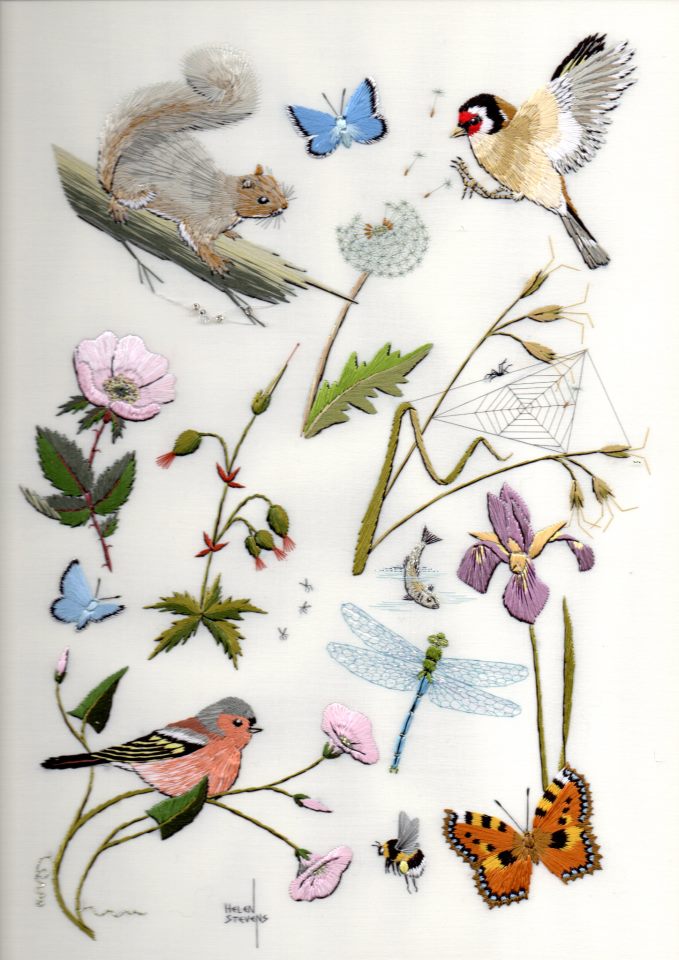
Helen: My two Masterclass samplers have been with me for a very long time. They contain examples of many of my “signature” techniques, which, by the end of the 1980’s, were already integral parts of my repertoire. More have followed, and those illustrated have been used in new and evolving ways, but those original samplers, now available as downloads, still contain everything needed to stitch “my way”. They travelled with me all over the world on lecture and teaching tours, to Canada, the USA, Australia, New Zealand, etc., and now with the Internet allowing such easy access to sharing, they have reached a whole new generation.
Leslie: How has embroidery spread as a community activity? Why do you think it has regained popularity?
Helen: I think there are many factors to the resurgence of hand embroidery as a popular art form and as a hobby. I specify HAND embroidery, as the main factor, I believe to be the pleasure engendered by working in a medium which harks back to a simpler, gentler time. One of the many things about embroidery which I find endlessly fascinating is that to create beautiful work, the ONLY tools you really need are a frame (working hoop) and a needle! And something to cut the thread with – but we have teeth if all else fails! The stitcher finds herself (or himself, as there are some remarkable male embroiderers) sharing a pastime with generations dating back aeons. Then, there is the knowledge that the natural world, which has, for centuries, been an inspiration to embroiderers, is under threat in a way never dreamed of in the past. There is a magic in recreating nature in this traditional, loving way.
Finally, there is now the ability to learn, share and teach the art worldwide online. Where, once, stitches and designs were taught and passed down through generations, with the disintegration of the extended family (in many cultures) these skills might have died out completely if the remaining enthusiasts could not communicate so easily with each other, across nations and continents.
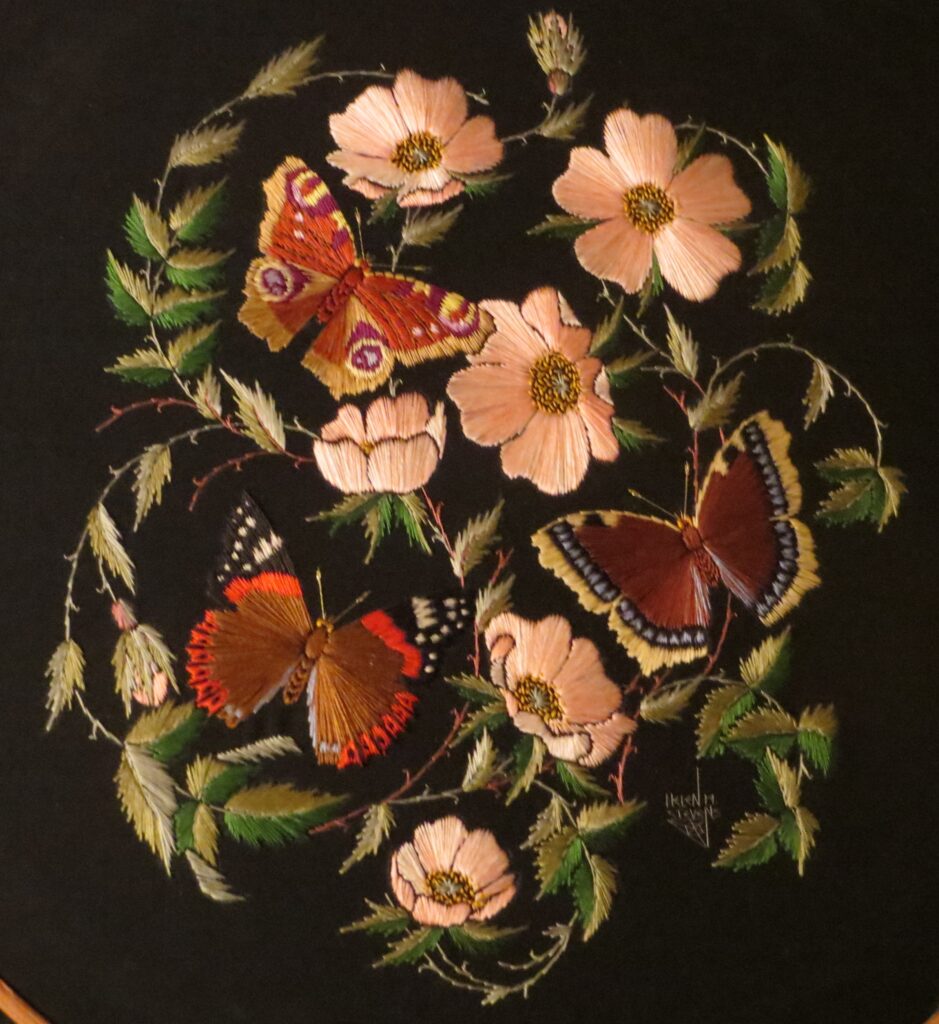
Leslie: What are the key things you’ve found out about the history of embroidery? How have you used it as a theme in your historical novels?
Helen: Embroidery has been many things to many people and cultures. The “history” of embroidery can, of course, be simply about the evolution of techniques, but I feel that it is much more than that. We are all familiar with the concept of Church embroidery. But it has also been used to celebrate important, secular or state events, both personal and national (even international) almost since pre-history. Decorated clothing is an obvious example – used universally for weddings, Christenings, all family traditions, and also for great state occasions. Coronations, Royal Jubilees, to commemorate war (and peace) as in the Bayeux Tapestry. Even in Soviet and Fascist states, a window or balcony occupied by the Head of State is a barren, bare place without a stitched drapery or celebratory standard.
Embroidery has been used to send secret messages in times of revolution and in eras of suppression. It has been the covert language of priests and princesses; its meaning has been the cause of executions and banishments. It can be subversive or inspirational. These are the elements which sometimes enter into the narrative of my own historical writing.

Leslie: How individually creative is embroidery (or should we value a collective/inclusive approach with set patterns)? How does it differ from painting by numbers?
Helen: That’s a good question. From the outset of my career, I always said (and meant) that I didn’t want to “teach”. That I wanted to DO, not just talk about doing. Many of my live Masterclass students and followers online are kind enough, however, to say that I am a “great teacher”. However, you will never hear me say there is a “right” or “wrong” way to so anything. I will show how I create a stitch, an effect, a finished piece … and if they want to do it the same way, that’s fine. But I always encourage people to make every piece their own, perhaps by changing something subtle, like the shade of a colour, the direction of a stitch and so on, or by interpreting my idea in a way entirely their own. After all, in any hand work, if you attempt to “copy” something identically, you are very unlikely to succeed. The nature of the emboidered medium, almost more than any other, is that it will vary piece to piece.
The “Old Masters” of the Renaissance had copyists in their studios recreating even their greatest works, or elements of them, for the less vastly rich patrons commissioning the Master’s originals. Hogarth, Gainsborough and Constable had their work reproduced by the thousand by talented engravers. These pieces carry a value in their own right, perhaps the aristocracy set a lesser monetary value upon them, but they brought joy to the many and have continued to do so.
Both my one-off originals, either commissioned work or exhibition pieces, and the original pieces which I create to be reproduced as designs and patterns by my students and followers, command whatever price contemporary taste and the art market bestows upon them. I hope and believe that the embroideries created from specific designs, by my followers, will be respected as being “after” Helen M. Stevens’, whilst the original embroideries created by talented designers who have learnt my techniques and love my interpretations will continue to be regarded as “in the school of Helen M. Stevens”. After all, if it was good enough for those artists just mentioned it is certainly good enough for me.
Next week I interview Canadian cartoonist Dawn Mockler.
ABOUT LESLIE TATE’S BOOKS:

Part 2 of my interview with Mark Statman looks closely at Mark’s Latin American poetic influences, his life in Mexico and ends with an extract
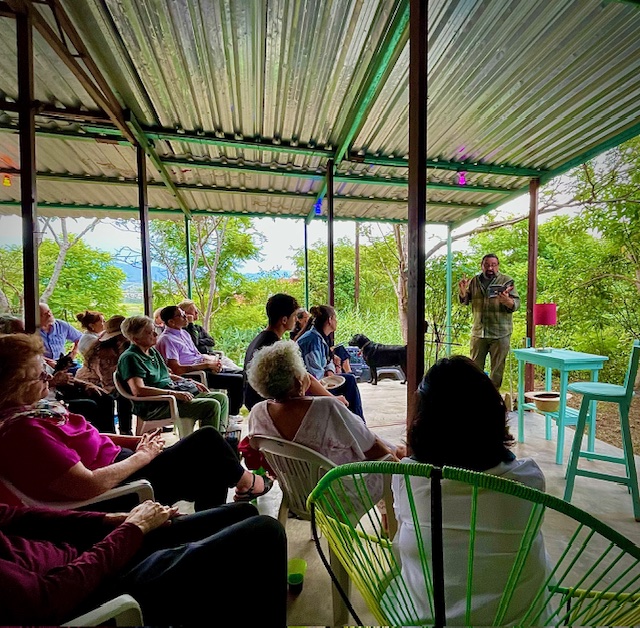
I interviewed international poet and translator Mark Statman about Volverse/Volver, his 14th published collection. Mark, who has won national arts awards, is Emeritus Professor of Literary
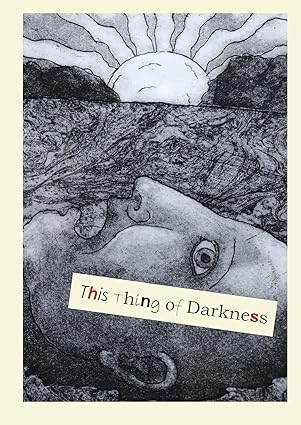
I interviewed Lisa Dart, finalist in the Grolier, Aesthetica and Troubadour Poetry Prizes and author of The Linguistics of Light (poems, Salt, 2008), Fathom (prose

I interviewed writer Julia Lee Barclay-Morton about her experience of autism. Julia began as an experimental dramatist in New York, moving to the UK to

I interviewed Gillean McDougall from Glasgow, who edited the collaborative projects Honest Error (on Charles Rennie Mackintosh and his wife Margaret Macdonald) and Writing the
| Cookie | Duration | Description |
|---|---|---|
| cookielawinfo-checkbox-analytics | 11 months | This cookie is set by GDPR Cookie Consent plugin. The cookie is used to store the user consent for the cookies in the category "Analytics". |
| cookielawinfo-checkbox-functional | 11 months | The cookie is set by GDPR cookie consent to record the user consent for the cookies in the category "Functional". |
| cookielawinfo-checkbox-necessary | 11 months | This cookie is set by GDPR Cookie Consent plugin. The cookies is used to store the user consent for the cookies in the category "Necessary". |
| cookielawinfo-checkbox-others | 11 months | This cookie is set by GDPR Cookie Consent plugin. The cookie is used to store the user consent for the cookies in the category "Other. |
| cookielawinfo-checkbox-performance | 11 months | This cookie is set by GDPR Cookie Consent plugin. The cookie is used to store the user consent for the cookies in the category "Performance". |
| viewed_cookie_policy | 11 months | The cookie is set by the GDPR Cookie Consent plugin and is used to store whether or not user has consented to the use of cookies. It does not store any personal data. |